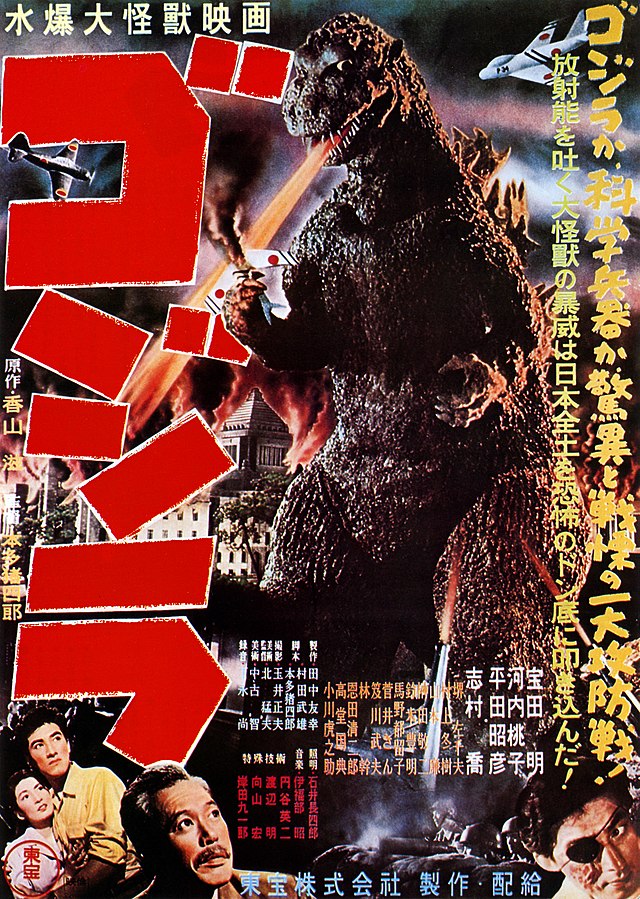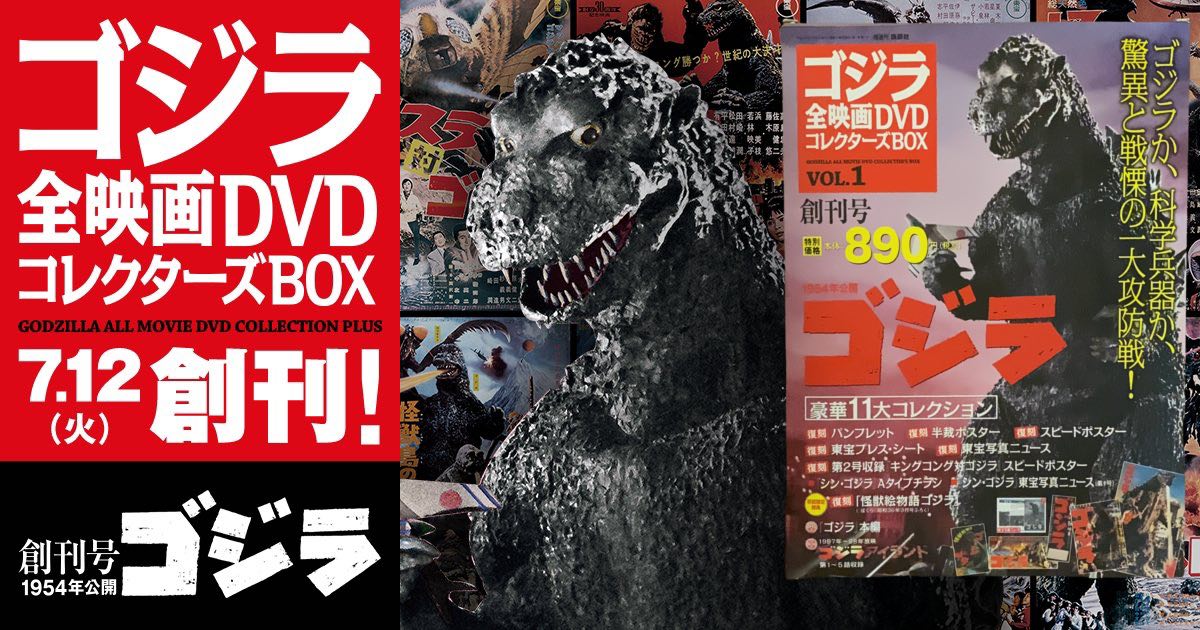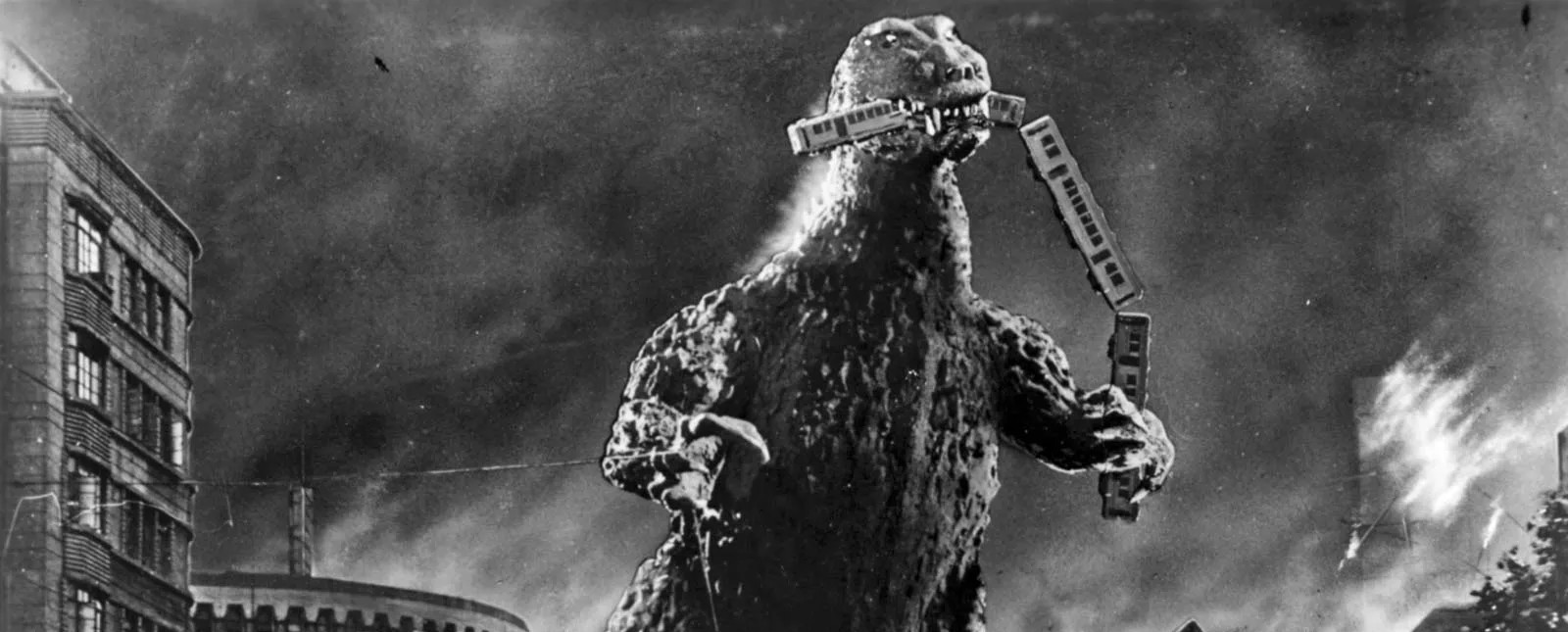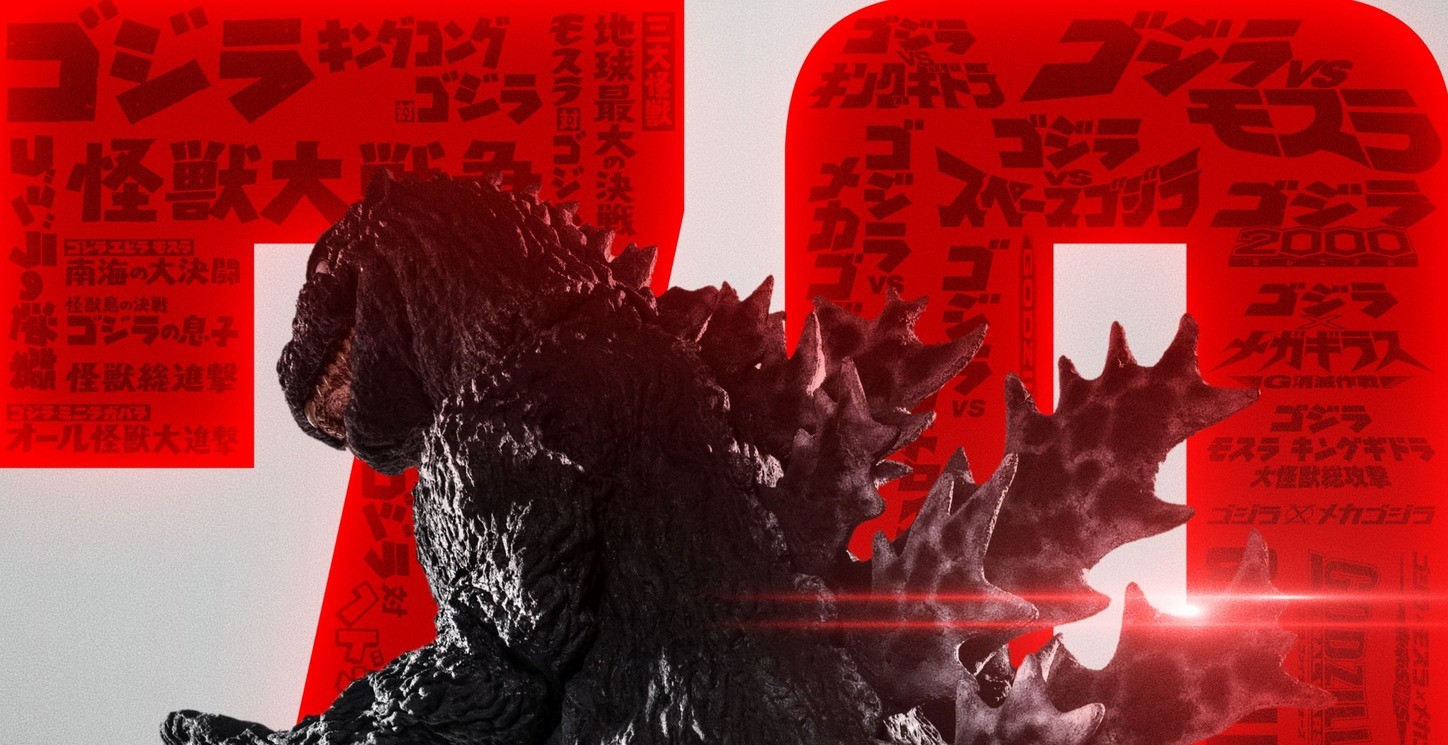Godzilla is a pop culture icon whose over-half-a-century discourse has ranged from thoughtful analysis to mockery. So much has been said about Godzilla as the personification of the atomic bomb, as Mother Nature, as superhero, villain, and everything in-between. This contribution to the great story of the world’s favorite kaiju will be to analyze the archetypes present throughout Godzilla’s eclectic history. I will be looking at the stages of the Hero’s Journey in both the films and characters in them – monsters included. I will be identifying the archetypal symbols present within the journey and what those symbols communicate about the physical and spiritual journey Godzilla and his co-stars have undertaken since he first lurched out of the Pacific in 1954.
The Hero’s Journey, for those who have never heard the term, is a sequence of archetypal story beats made popular in 1949 by professor and mythologist Joseph Campbell in his book, The Hero with a Thousand Faces. In that book, Campbell argues that heroes and myths from across the global span of time and space all encounter a similar sequence of events and trials.
As Campbell puts it in his book:
“A hero ventures forth from the world of common day into a region of supernatural wonder: fabulous forces are there encountered and a decisive victory is won: the hero comes back from this mysterious adventure with the power to bestow boons on his fellow man.”
So, in general, there are three phases to the journey: Departure, Initiation, and Return. Within those phases, many stages are encountered. Campbell identified 17 stages within the Hero’s Journey, but it is common within the world of television, film, and literature to simplify Campbell’s stages into 12 (the Ordinary World, the Call to Adventure, Refusal of the Call, Meeting the Mentor, Crossing the Threshold, Tests, Allies, and Enemies, Approaching the Inmost Cave, the Ordeal, the Reward, the Road Back, Resurrection, and Return with the Elixir), outlined by film consultant Christopher Vogler’s popular book for screenwriters, The Writer’s Journey.
So, what does Joseph Campbell have to do with Godzilla? Before we delve too deeply into the Hero’s Journey, let’s identify a starting place in the pantheon of Godzilla material with which we will analyze the various archetypes therein. I think I would be with the majority if I said there is no better place to begin when discussing Godzilla than with the original – Gojira (1954), directed by Ishiro Honda.
Let’s begin with the first stage of the Hero’s Journey, the Ordinary World. This is where we meet our characters and learn about life before the adventure begins. Oftentimes, the Ordinary World is a boring, mundane place out of which the hero wants to escape, but Gojira (1954) plays against this expectation by dropping the audience directly into the action. The first scene of the film sees a Japanese fishing boat engulfed in flames and then rushes to a montage of chaos as officials race to find survivors and answers to what caused this attack, leading to a rescue boat being destroyed and more lives lost. No discussion of Gojira (1954) can avoid discussion about Japan’s relationship to the atomic bomb, and by hurling the audience into the film en media res – or “in the middle of things” – reminds us that there is no ordinary, boring world in Japan now that atomic bombs are being tested off of their shores and many of their people still live with the horror of the atomic bombings of World War II. Instead, Gojira begins with the second stage of the Hero’s Journey, the Call to Adventure. What has caused such brutal destruction, and what can be done to prevent it in the future? These are the questions that will drive our protagonists forward out of their comfortable lives and into the world of adventure.
Once the hero has been made aware of the adventure, they must decide whether or not they will accept the Call. It is here that we meet our ensemble: Dr. Yamane, Ogata, Emiko Yamane, and Dr. Serizawa. We’ll get to Dr. Yamane in a bit, so put a pin in that character for now; let’s, instead, start with Ogata. Ogata is a sailor with the coastguard, eager for adventure. He accepts the call rather eagerly, driven to protect his country and his love, Emiko. The daughter of Dr. Yamane, Emiko dutifully assists both her father and Ogata as they seek answers as to what has been menacing these boats. On the periphery of this group is Dr. Serizawa, a mysterious figure whose inclusion in the plot becomes clear later on. He is Emiko’s fiancé and knows nothing of her affair with Ogata. He will later reveal to Emiko his invention, the Oxygen Destroyer, but will refuse to use it against Godzilla. This is what Campbell calls the Refusal of the Call – a moment when the hero does not accept the Call to Adventure and instead seeks to hide in the comfort of their known world. Often, the hero will provide an excuse as to why they are refusing, but this is usually to mask their own insecurities and fears. Ogata says he is worried about his invention could be used as a weapon by others if the world were to learn of its existence, but references to German scientist colleagues and a suspicious wound marked by an eyepatch suggest that perhaps Serizawa is afraid of confronting his own involvement in WWII and how his creation is an extension of Japan’s involvement with Nazi Germany. Whether that’s a bit of a stretch or not, Serizawa stays behind as Ogata, Emiko, and Dr. Yamane set sail for a small island in which legends exist of a large, marine monster that could hold the key to those recent disasters.
As I said before, Dr. Yamane is a special character. Heroes rarely have all of the answers on their own, and before completing their journey they will need to learn a few things. Dr. Yamane is what Campbell would call the mentor, and Meeting the Mentor is an important stage of the Hero’s Journey. The mentor is usually identified as an older character with years of wisdom to share with the hero. Dr. Yamane is a scientist, and he wants answers, not just action, when it comes to the tragedies besetting these boats. It is his wisdom that will later seek to cool Ogata’s passionate desire to fight against Godzilla, acting as the voice of reason not only to Ogata but the audience as well: if we can’t learn about the mistake of the past and at hand, how will we be safe from them in the future?
Crossing the ocean is a powerful image in the world of archetypes, and in the Hero’s Journey this is a good indication that our heroes are entering the world of adventure, or Crossing the Threshold. A threshold is an entryway, and here it symbolizes the heroes leaving what they know and entering into a world of mystery. Ogata, Emiko, and Dr. Yamane arrive at Odo Island, where they speak with survivors of the previous attacks. That night, a terrible storm sweeps through, bringing with it Godzilla’s wrath as he tramples through the village. Storms, and especially wind, are associated with a change of circumstances in Jungian archetypes, and our heroes are about to come face-to-face with a terrifying change in circumstance. The next day, they stumble across a gigantic footprint – a footprint that is radioactive. It is here that our heroes finally catch their first glimpse of Godzilla, himself, peeking over the mountain and threatening their entire cadre. It is at this moment that our heroes know they are “not in Kansas anymore.” Crossing the Threshold is a symbolic moment of committing to the adventure – and its consequences – with no turning back. Godzilla is real, and something has to be done about him.
Now that our heroes have committed to the adventure, they must face a series of Tests, Allies, and Enemies. In this stage, the hero learns whom they can trust, whom they must avoid, and we see them face a series of trials that show them what skills and knowledge they must still obtain. Upon returning to the mainland, Dr. Yamane seeks to warn the people of Japan about the monster he saw on Odo Island; however, the government seeks to keep Godzilla a secret so as not to create panic. A brilliant political satire ensues in which the chamber erupts in a shouting match between proponents and opponents of releasing the news about Godzilla, while Dr. Yamane can only hang his head in solemn resignation at the lack of action. Ogata and Dr. Yamane debate what should be done about Godzilla – should he be destroyed, as Ogata advocates for, or should his ability to absorb radiation be studied, as Dr. Yamane argues. Meanwhile, Emiko goes to Dr. Serizawa to tell him about her and Ogata; failing that, she is instead shown the Oxygen Destroyer by Serizawa and is sworn to secrecy, which closes her off to Ogata and her father. Our fellowship is breaking as the pressure brought on by Godzilla’s presence begins to crush everyone involved. Godzilla finally makes it to the Japanese mainland, himself, and causes mass panic as he walks from one shoreline to the next – not before chomping on a railcar and causing heavy human casualties. The stakes on this adventure are now made clear, and our heroes can no longer avoid a direct confrontation with Godzilla.
The Hero’s Journey darkens at this juncture, and the heroes must prepare to face their dark night of the soul. Vogler names this stage “Approaching the Inmost Cave,” a reference to Joseph Campbell’s famous advice:
“The cave you fear to enter holds the treasure you seek.”
Here, our heroes prepare for direct confrontation with the forces they set out to confront in the first place. The Japanese government plans to build a series of electrified towers strung together by wires that will electrocute Godzilla should he attempt to pass through them. The armed forces create a perimeter of canons, as well, to try and stave off the monster. Of course, when Godzilla makes his inevitable landfall, all of these defenses fail, and our heroes are thrown into the darkest chapter of the Hero’s Journey, the Ordeal. Here, our heroes hit rock bottom as they come into direct contact with their antagonistic forces. Godzilla’s rampage is merciless as he crushes and burns everything in his path. Helpless civilians look on in terror and despair as Godzilla’s awesome power evokes the horrific imagery of the Hiroshima and Nagasaki atomic bombings. Fire is an archetypal symbol of destruction; as Godzilla represents the horrors of an atomic-armed world, our heroes now face the dread of how to live under such horror. Emiko, Ogata, and Dr. Yamane can only watch from a distance as Godzilla wades back into the ocean, swatting fighter jets as he descends.
For surviving the Ordeal, our heroes receive the Reward. Campbell refers to the goal of the Hero’s Journey as the Ultimate Boon, and this is what the hero is rewarded with for successfully navigating the adventure; in Gojira (1954), the Reward is a bittersweet one. After Godzilla destroys Tokyo, Emiko can no longer keep Serizawa’s secret, and she tells Ogata about the Oxygen Destroyer. The two rush to implore Serizawa to use his invention to destroy Godzilla. Serizawa refuses, continuing to deny his role in this adventure. It isn’t until Serizawa witnesses the death and destruction wrought by Godzilla on his television that he finally realizes that he can no longer sit idly by. Emiko and Ogata’s mission is successful, and Serizawa agrees to use the Oxygen Destroyer against Godzilla; however, Emiko weeps as Serizawa burns his notes on the device. Whether or not she is consciously aware of it, Emiko has acknowledged that this Reward will come at a terrible price.
The final few stages of the Hero’s Journey see a reverse in momentum. If the hero pursued the villain in the beginning, the villain now turns their attention to the hero. This stage is called the Road Back, and in Gojira (1954), our heroes now venture out to find Godzilla and prevent future catastrophe. Our four main characters – Emiko, Ogata, Dr. Serizawa, and Dr. Yamane – unite on the expedition to the Pacific Ocean where Geiger counter readings confirm the location of Godzilla. Ogata volunteers to take the Oxygen Destroyer with him, again fulfilling the role of classic hero, but Serizawa insists on personally handling his creation. They descend into the ocean depths, an image that evokes the archetypal unconscious. According to Jungian archetypes, the unconscious is that mysterious realm that dreams come from. It is where humans use images as symbols to make sense out of their deepest, emotional issues. A tree might represent a connection to life, one’s mother might symbolize a nurturing desire. The ocean represents the grand mystery of the unknown, where life’s meaning and purpose is hidden and can only be obtained by those brave enough to swim those waters. Ogata and Serizawa plunge into their collective unconscious, and it is there that mankind’s modern sin awaits – Godzilla, a monster born from man’s desire to build the ultimate weapon.
The time arrives to use the Oxygen Destroyer. Serizawa activates the device, and Ogata begins his ascent. Serizawa, on the other hand, cuts his line and remains on the ocean floor to die with both Godzilla and his invention. Facing the Road Back requires the hero to utilize all that they have learned on their quest. It’s a second Ordeal, a final exam, that allows the hero to show how far they’ve come physically, mentally, and emotionally on the Hero’s Journey. This is called the Resurrection, and it’s a bit ironic given Serizawa’s sacrifice at the end of Gojira (1954). However, Serizawa’s choice is a moment of rebirth. Not only has he answered the Call to Adventure to defeat Godzilla, but he is offering the world a second chance: Godzilla is dead, and so too is the chance to build a stronger weapon out of the Oxygen Destroyer. He tells Ogata and Emiko to be happy together, and in doing so is hoping that the world, like these two lovers, will continue on in harmony.
The end of the film, of course, is far from a happy one. Godzilla dies, yes, but so does Serizawa, and – despite his bittersweet blessing for Emiko and Ogata – the two can do nothing but mourn his passing. There are no cheers for the death of Godzilla, only somber recognition of Serizawa’s sacrifice. The final stage of the Hero’s Journey is the Return with the Elixir in which the hero brings something back that will make life a little better for all. While some have criticized Campbell for popularizing and celebrating the individual’s development over the shared community’s, the purpose of the hero’s boon, or the Elixir, is to heal the wounds of the past and prepare society for the next chapter. Gojira (1954) ends with a warning not only for its characters but the audience as well, as Dr. Yamane laments, “I can’t believe that Godzilla was the last of his species. If atomic bomb testing continues, then someday, somewhere in the world, another Godzilla may appear.” The Reward is a chance for atonement, a reconciliation with the decision to create and use the atomic bomb on fellow human beings. There will be no happiness for Emiko and Ogata just like there will be no enduring celebration of Godzilla’s demise if mankind continues to awaken future Godzillas to scorch our future.
The original incarnation of Japan’s greatest creature is many things – a classic monster movie, an allegory for the atomic bomb, a snapshot of the anxieties plaguing those of a post-war Japan. In addition to all of these things, the film is also an example of the enduring power of the Hero’s Journey. Our heroes set out on a quest to discover the identity of an atomic threat. On their way, they challenge their own beliefs of what to do with this threat; some grow closer, others distance themselves, and ultimately the journey ends in sacrifice and a plea to avoid the mistakes that led to this disaster in the first place. The Hero’s Journey takes its audience on two quests at the same time – a physical adventure and an emotional arc.
Gojira is not only a phenomenal monster movie that stands the test of time, but a deeply powerful call to action for its viewers to fight against the powers of their own time so that they may never hear the screeching roar and feel the blistering heat of mankind’s hubris.





